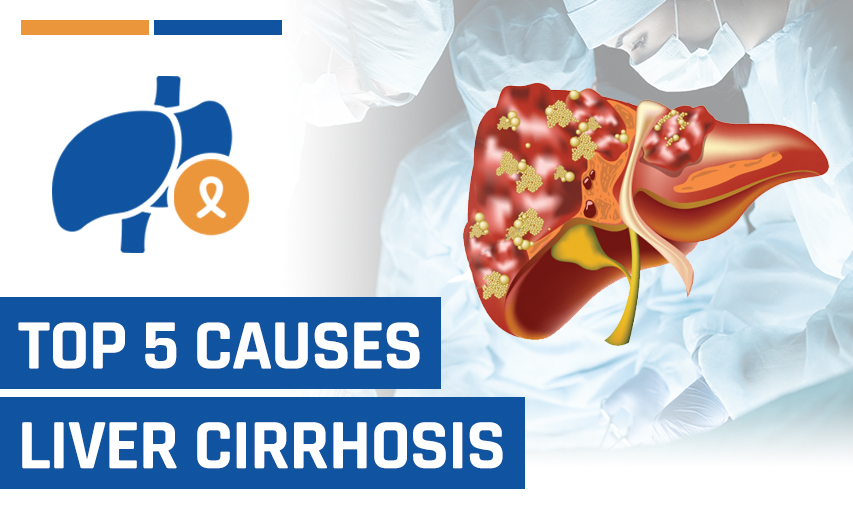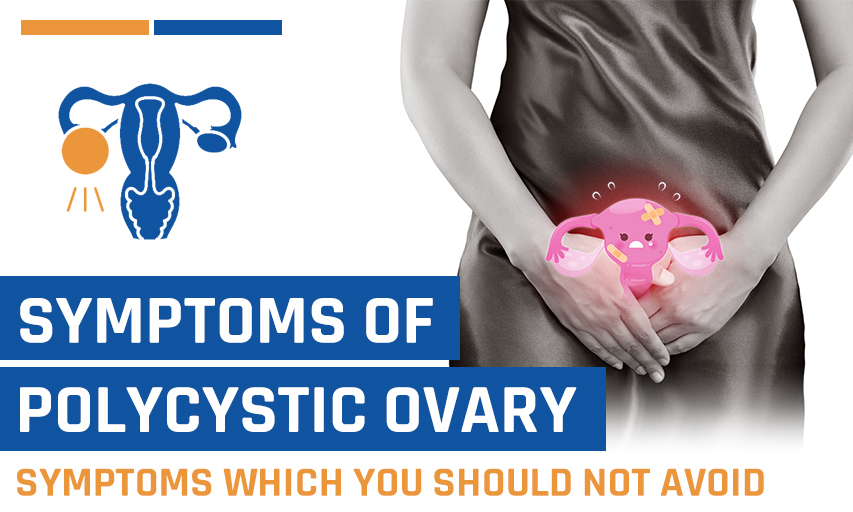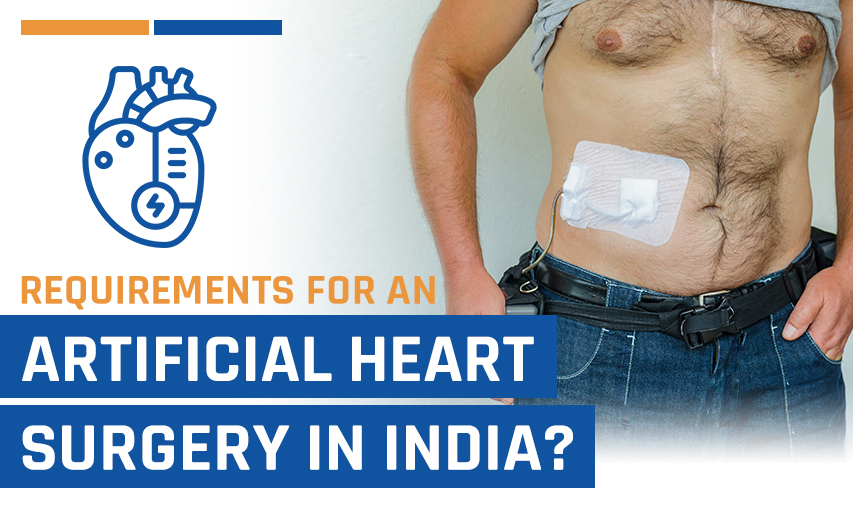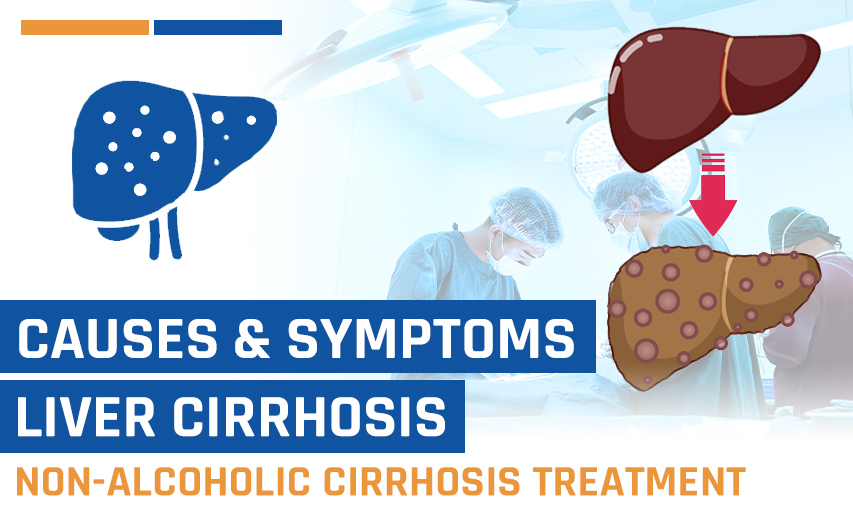5 Liver Cirrhosis Causes That May Lead to a Liver Transplant
Liver cirrhosis is a progressive condition in which fibrous tissue replaces the liver tissue. These can impair liver functioning quite a bit. When it advances, the condition may percolate to end-stage liver failure, requiring a liver transplant - the only definitive treatment at this point. There can be a number of liver cirrhosis causes, necessitating early detection of the liver cirrhosis symptoms to calm down any contingency.
Indian hospitals are now the most preferred destination for African patients to obtain liver transplant surgery for cirrhosis. World-class medical treatment, highly qualified transplant surgeons, and cost-effective treatment compared to that in the Western world are available in India. India invites liver transplant patients from all over the world, including African countries, due to its successful liver transplant outcomes, state-of-the-art medical infrastructure, and low waiting periods. A blend of these highly important factors is responsible for making the Indian peninsula the most sought-after option for a liver cirrhosis treatment.
When Does a Liver Transplant Become Necessary?
A liver transplant is necessary when the liver loses its ability to function due to liver failure and severe damage or disease. Conditions like cirrhosis of the liver, hepatitis, liver cancer, and genetic disorders all lead to irreversible liver failure, leading liver transplantation to be the only life saving option.
When the liver is no longer functioning, the body cannot filter out toxic substances. It also cannot produce essential proteins or carry out metabolism. This leads to fatal complications with severe morbidity and only a slim chance of survival. A liver transplant replaces the damaged liver with a healthy one from a donor. This procedure restores normal liver function and significantly improves the patient's quality of life.
5 Liver Cirrhosis Causes That Could Result in Liver Transplantation
Various other underlying factors can cause liver cirrhosis, leading to more severe liver damage. Under these circumstances, a liver transplant seems to be the only ultimate choice for resurrection. Below are numerous probable liver cirrhosis causes, which gradually lead to an end, requiring a liver transplant.
1. Prolonged Alcohol Intake
Excessive alcohol use over a long period is one of the leading liver cirrhosis causes. Alcoholic liver disease (ALD) is conceived after prolonged high alcohol intake, causing inflammation and fibrosis. The liver metabolises alcohol to form toxic metabolites that damage liver cells, leading to fibrosis and, eventually, liver cirrhosis. Clinical studies have shown that a significant percentage of cirrhosis cases are related to alcoholism. Liver function rapidly deteriorates as the cirrhosis advances and thus may necessitate transplantation to sustain life.
2. Chronic Hepatitis C Infection
HCV is responsible for the largest proportion of liver cirrhosis cases globally. The virus directly causes permanent damage to the cells and liver tissue with chronic inflammation. Roughly 20–30% of hepatitis C patients will develop liver cirrhosis. Signs of liver dysfunction become inflicted with advanced cirrhosis; by then, transplantation may be critically necessary. Timely identification with antiviral liver cirrhosis treatment carries the best preventive chance against progression to cirrhosis.
3. Chronic Hepatitis B Infection
Hepatitis B is also one of the significant liver cirrhosis causes. Similar to HCV, chronic HBV leads to ongoing liver inflammation and damage, resulting in fibrosis and cirrhosis over time. Patients who have co infections or consume alcohol heavily are at enhanced risk for cirrhosis. Depending on the first onset of cirrhosis and liver failure, transplantation is the only therapeutic alternative. Vaccination strategies and antiviral therapies are the principal goals for the prevention and management of cirrhosis related to HBV.
4. Non-alcoholic steatohepatitis (NASH)
Non-alcoholic steatohepatitis (NASH) is a severe form of non-alcoholic fatty liver disease (NAFLD). It is characterised by liver fat accumulation accompanied by inflammation and damage. If one absorbs NASH risk factors such as obesity, T2DM, or metabolic syndrome, there are apparent phobias as to the progression of NAFLD to cirrhosis. Toward the end of cirrhosis, a transplant may be the only resort. NASH is best addressed with a livelihood modification plan, including weight management, keeping within range with proper dietary foods, et al., in general, for the NASH group so that it can curb its worsening and future cirrhosis.
5. Autoimmune Hepatitis
Autoimmune hepatitis is an illness that arises mainly from an abnormal autoimmune response by the body's mechanisms attacking liver cells. It results in inflammation and, ultimately, cirrhosis. However, the reason for its development remains unclear. If not properly controlled, continuous inflammation nearly leads to irreversible liver damage such that the individual may proceed to cirrhosis and liver failure. In such cases, the liver is subject to transplantation. Immunotherapy with medications that decrease immune responses is crucial to arrest autoimmune hepatitis development and thereby resist cirrhotic progression.
What are the Types of Liver Transplants?
Liver transplantation can be categorised into different types based on the source of the donor organ. Deceased donor liver transplantation (DDLT) is the preferred type, where the liver is taken from a brain-dead donor. This transplantation, a standard procedure, takes place as soon as a matching organ becomes available. The recipient ends up on a waiting list and is prioritised for transplantation according to the severity of their liver disease.
Living donor liver transplantation (LDLT): Living donor liver transplantation has been another common choice where a healthy person, usually a close relative, donates a part of their liver. Since the liver regenerates itself unlike any other organ, the liver parts that both the donor and the recipients donated will grow to normal size in just a few months. LDLT minimises prolonged waiting times that may arise with deceased donor transplants by allowing them to plan their surgery.
Split Liver Transplantation: A less common type is split liver transplantation, where a single deceased donor's liver is divided and transplanted into two different recipients—typically an adult and a child - an excellent way to extend the benefit and save lives for the patients. There are unique benefits associated with each type of liver transplant that are dependent upon the kind of availability of the organ, the health of the patient, and real medical urgency.
Bottom Line: Why Detect the Different Liver Cirrhosis Causes?
Understanding the different liver cirrhosis causes is important to initiate preventive interventions and keep your liver healthy. The liver cirrhosis life expectancy ensures positive results with appropriate liver cirrhosis treatment sought at the earliest, guaranteeing a long life. Chronic alcohol consumption, hepatitis C and B infections, and autoimmune hepatitis are among the primary liver cirrhosis causes that can necessitate a liver transplant. For African patients, India, a country with a prominent primary healthcare system, has state-of-the-art clinics and qualified surgeons who have been well-trained in handling complex liver cirrhosis cases, and that too at a really low cost.




















Be First To Comment
Leave a Comment